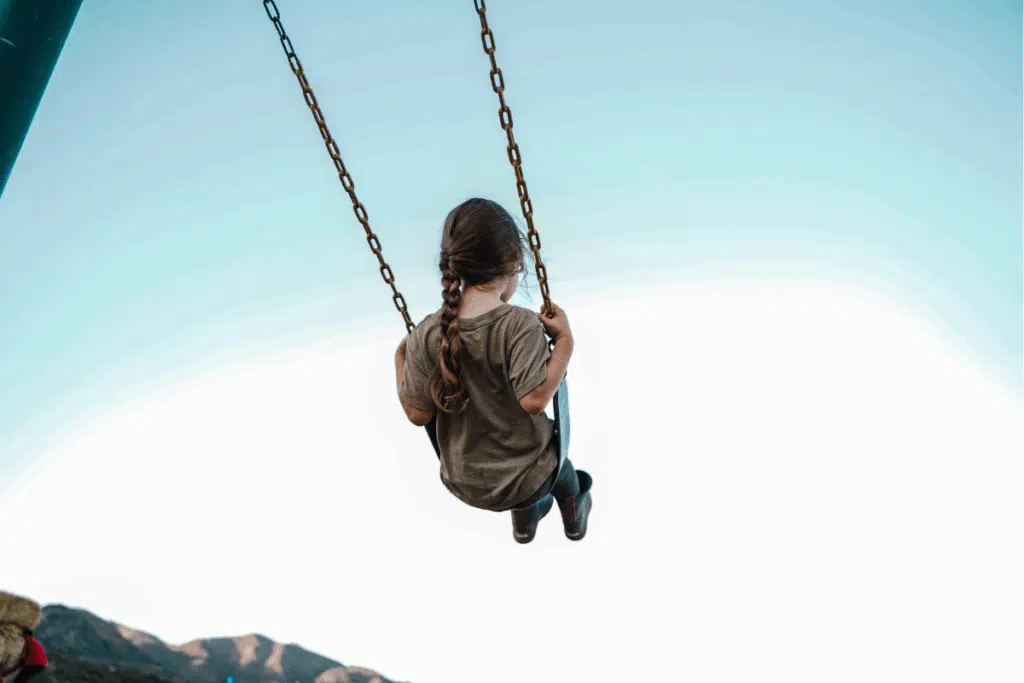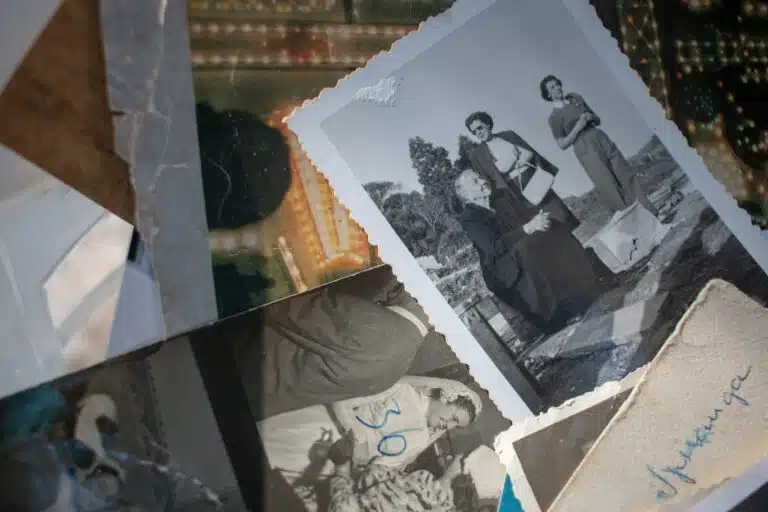จนถึง สามในสี่ของประชากร จะประสบกับเหตุการณ์สะเทือนขวัญหรือเหตุการณ์ที่กระทบกระเทือนจิตใจในช่วงชีวิต – ประสบการณ์หรือประสบการณ์หลายอย่างที่น่าทุกข์ใจ รบกวนใจ หรือเป็นอันตรายอย่างยิ่ง
คำตอบของทุกคนต่อ การบาดเจ็บ มีลักษณะเฉพาะตัว รวมถึงความรุนแรงของผลกระทบและระยะเวลาที่ผลกระทบจะส่งผลต่อพวกเขา ไม่มีวิธีตอบสนองที่ “ถูกต้อง” หรือ “ผิด” และไม่มีกำหนดเวลาว่าใครจะ “ผ่านพ้นมันไปได้” เมื่อใด
คนส่วนใหญ่ตระหนักและยอมรับถึงเหตุการณ์สะเทือนขวัญที่เกิดขึ้น แต่มีเพียงไม่กี่คนที่เข้าใจถึงผลกระทบระยะยาวของเหตุการณ์ดังกล่าวและต่อพฤติกรรมของผู้อื่น นั่นคือสิ่งที่เราหวังว่าจะสร้างความตระหนักรู้และการเปลี่ยนแปลงในชุมชนที่กว้างขึ้น
ความสัมพันธ์ระหว่างความเครียดและพฤติกรรมคืออะไร?
ในระดับพื้นฐานที่สุด บาดแผลทางจิตใจมีผลกระทบอย่างมากต่อสมอง ซึ่งควบคุมวิธีการกระทำ ความรู้สึก และความคิดของเรา
สมองของทุกคนตอบสนองต่อข้อมูลอินพุตทั้งหมดโดยอัตโนมัติในลำดับที่กำหนด ตั้งแต่ส่วนที่ต่ำที่สุดไปจนถึงส่วนบนสุดของสมอง ภาพนี้ อาจช่วยให้คุณเห็นภาพลำดับได้
ส่วนพื้นฐานที่สุดของสมองของเรา (เรียกอีกอย่างว่าสมองสัตว์เลื้อยคลาน) จะคอยสแกนหาภัยคุกคามอย่างต่อเนื่องและทันที หน้าที่หลักคือเพื่อให้แน่ใจว่าเราจะมีชีวิตรอดในทันที ส่วนใหญ่แล้ว เราแทบไม่ได้สังเกตด้วยซ้ำว่าสมองกำลังสแกนอยู่ เนื่องจากข้อมูลอินพุตต่างๆ (เช่น การมองเห็น การได้ยิน การได้กลิ่น หรือความรู้สึก) ถือว่าปลอดภัย
หากตรวจพบภัยคุกคาม ก็ถือเป็นเรื่องอื่น สมองส่วนกลาง (ส่วนสัตว์เลี้ยงลูกด้วยนม) จะตอบสนองทันที และตอบสนองต่อความเครียด เช่น หนี สู้ หรือหยุดนิ่ง

บุคคลที่ประสบกับการตอบสนองแบบหนีหรือต่อสู้อาจดูกระสับกระส่าย กังวลสับสน หรือตะโกนด้วยความโกรธหรือหงุดหงิด ในเวลาเดียวกัน พวกเขาอาจรู้สึกหัวใจเต้นเร็วขึ้นหรืออะดรีนาลีนพุ่งพล่าน ขณะที่ร่างกายเตรียมที่จะหลบหนี สู้ หรือหยุดนิ่ง เนื่องจากสมองจดจ่ออยู่กับภัยคุกคามนั้นโดยสมบูรณ์ พวกเขาอาจไม่ประมวลผลสิ่งอื่นๆ เช่น เวลาที่ผ่านไปหรือผู้คนที่อยู่รอบข้าง
การตอบสนองแบบนิ่งเฉยเกิดขึ้นเมื่อมีภัยคุกคามมากเกินไป หรือความสามารถของเราในการหลบหนี ป้องกัน หรือปกป้องตัวเองลดลง ผู้ที่ตอบสนองต่อการตอบสนองแบบนิ่งเฉยอาจฟุ้งซ่าน ตอบสนองช้า คลุมเครือ หรือตัดขาดจากสิ่งที่เกิดขึ้นรอบตัว สมองหยุดประมวลผลข้อมูลและมุ่งเน้นไปที่การรักษาอัตราการเต้นของหัวใจและการหายใจ ซึ่งเชื่อกันว่าเป็นปัจจัยป้องกันพื้นฐานที่ยับยั้งความเจ็บปวดและความกลัวที่เราไม่สามารถทนได้
หากการตอบสนองต่อความเครียดประสบความสำเร็จในการกำจัดหรือลดภัยคุกคาม ส่วน "ที่สูงกว่า" ของสมอง (นีโอคอร์เทกซ์) ก็จะสามารถทำงานได้ เมื่อสิ่งนั้นเกิดขึ้น ผู้คนจะสามารถคิด ใช้เหตุผลและตรรกะในการวิเคราะห์สถานการณ์ สงบสติอารมณ์ และตัดสินใจอย่างมีสติว่าจะทำอย่างไรต่อไป
อิทธิพลอันยาวนานของบาดแผลทางจิตใจ
พูดอย่างง่ายๆ ก็คือ บาดแผลทางจิตใจทำให้การทำงานของสมองเปลี่ยนไป หากการตอบสนองแบบสู้ หนี หรือหยุดนิ่งเกิดขึ้นบ่อยขึ้นและ/หรือก่อให้เกิดอันตรายอย่างต่อเนื่อง โดยเฉพาะในวัยเด็ก การตอบสนองดังกล่าวจะรุนแรงขึ้นและบ่อยครั้งขึ้น
ซึ่งหมายความว่า เมื่อเหตุการณ์ที่กระทบกระเทือนจิตใจที่เกิดขึ้นจริงไม่ได้เป็นภัยคุกคามอีกต่อไป สมองจะยังคงมีความอ่อนไหวสูง เสมือนว่ากำลังรอที่จะตอบสนองต่อภัยคุกคามนั้นอยู่ตลอดเวลา ข้อมูลที่ส่งไปยังสมองเพื่อ “เตือน” ให้ระลึกถึงภัยคุกคามที่กระทบกระเทือนจิตใจครั้งก่อน จะ “กระตุ้น” การตอบสนองแบบสู้ หนี หรือหยุดนิ่งทันทีและโดยอัตโนมัติ สมองจะหลอกล่อให้บุคคลนั้นคิด รู้สึก และรับรู้ราวกับว่าตนได้กลับไปสู่เหตุการณ์ที่กระทบกระเทือนจิตใจนั้นอีกครั้ง ก่อนที่บุคคลนั้นจะมีเวลาตระหนักว่าเหตุการณ์นั้นไม่ได้เป็นภัยคุกคามแต่อย่างใด
นี่คือสิ่งที่ผู้คนเรียกว่า "การกระตุ้น"
สิ่งสำคัญคือต้องชี้ให้เห็นว่าหากบุคคลประสบกับเหตุการณ์สะเทือนขวัญในช่วงวัยเด็ก ผลกระทบและการตอบสนองต่อความเครียดอาจเด่นชัดและรุนแรงมากขึ้น ในขณะที่สมองของเด็กยังคงอยู่ในช่วงพัฒนา ปฏิกิริยาตอบสนองหรือความอ่อนไหวที่เพิ่มขึ้นนี้อาจกลายเป็น "สายสัมพันธ์" ในการทำงานของเด็ก

การตอบสนองต่อเหตุการณ์เลวร้ายมีลักษณะอย่างไร?
ลองพิจารณาสถานการณ์สมมติต่อไปนี้:
เจมี่เคยถูกทำร้ายร่างกายเป็นเวลานานโดยผู้มีอำนาจเมื่อตอนเขายังเป็นเด็ก ผู้ทำร้ายเริ่มใช้ความรุนแรงเมื่อเมา และทุกครั้งที่เมา พวกเขาจะเปิดเพลงใดเพลงหนึ่งและเล่นซ้ำๆ ในที่สุด ผู้ทำร้ายก็ถูกพรากจากชีวิตของเจมี่ไป ชีวิตของเขามีความปลอดภัยมากขึ้นและได้รับการดูแลเอาใจใส่เป็นอย่างดี แต่เขาไม่เคยได้รับการรักษาบาดแผลทางจิตใจที่เขาได้รับ แม้ว่าเขาจะต้องเผชิญกับช่วงเวลาที่ยากลำบาก แต่เขาก็สามารถ “ผ่านมันไปได้”
วันหนึ่ง ขณะที่เจมี่เป็นผู้ใหญ่แล้ว ขณะที่เขากำลังซื้อของชำ จู่ๆ เพลงที่ผู้ล่วงละเมิดเขาเคยเล่นก็ดังขึ้นจากลำโพง
เนื่องจากสมองของเขาถูกสร้างมาให้รับรู้เสียงดังกล่าวว่าเป็นภัยคุกคามร้ายแรง จึงตอบสนองต่อความเครียด (สู้ หนี หรือหยุดนิ่ง) ทันที เขาเริ่มกระสับกระส่าย เดินไปเดินมา และพึมพำกับตัวเอง คนอื่นๆ ในซูเปอร์มาร์เก็ตเริ่มจ้องมองเขา และเขาตะโกนบอกพวกเขาให้ถอยห่าง
การตอบสนองต่อความเครียดนั้นรุนแรงมากเนื่องจากสมองรู้ว่าเพลงนั้นเชื่อมโยงกับอันตรายจริง ๆ ในตอนแรก ความรุนแรงนั้นอาจหมายถึงสมอง “ติดขัด” กับการตอบสนองต่อความเครียดที่เพิ่มสูงขึ้น ทำให้ “การเข้าถึง” นีโอคอร์เทกซ์ถูกปิดกั้น ซึ่งปกติแล้วเจมี่จะรู้ว่าจริง ๆ แล้วเขาไม่ได้อยู่ภายใต้ภัยคุกคามในสถานการณ์นี้
คุณสามารถช่วยเหลือผู้ที่กำลังเผชิญกับเหตุการณ์เลวร้ายได้อย่างไร
แน่นอนว่าหลังจากอ่านสิ่งนี้แล้ว คุณไม่สามารถลดระดับความรุนแรงของใครบางคนที่ถูกกระตุ้นได้ ซึ่งอาจเป็นเหตุการณ์ที่น่าเผชิญหน้าและสร้างความไม่พอใจให้กับผู้ที่เกี่ยวข้องทุกคน
อย่างไรก็ตาม เราหวังว่า หากคุณอยู่ต่อหน้าบุคคลที่แสดงพฤติกรรมโกรธเคือง หงุดหงิด เถียง หรือเครียดมากเกินไป คุณสามารถพิจารณาสาเหตุที่เป็นไปได้เบื้องหลังพฤติกรรมดังกล่าวได้ บางทีคุณอาจลองตัดสินบุคคลนั้นอย่างไม่รุนแรงนัก และตอบสนองด้วยความเห็นอกเห็นใจแทนความโกรธ (หากสถานการณ์เอื้ออำนวย)
เมื่อมีคนเผชิญกับการตอบสนองต่อเหตุการณ์ร้ายแรง ปฏิกิริยาจากคนรอบข้างอาจเพิ่มหรือลดความรุนแรงของสิ่งที่เกิดขึ้นได้ ดังนั้น การตอบสนองที่สงบและปลอดภัยกว่าน่าจะส่งผลดีต่อสถานการณ์มากกว่าการตอบสนองที่รุนแรงและโกรธเคือง
ตัวอย่างเช่น ในสถานการณ์ของเจมี่ หากคุณไม่คิดว่าการกระทำของเขาอาจเกิดจากความเจ็บปวดทางใจ คุณอาจจ้องมองเขาหรือบอกให้เขาใจเย็นลง การกระทำเช่นนี้อาจทำให้เจมี่รู้สึกกลัวและตอบสนองต่อคำขู่มากขึ้น
ในทางกลับกัน หากคุณถามตัวเองว่า “อะไรทำให้เขามีพฤติกรรมเช่นนี้” คุณอาจสามารถทำให้สถานการณ์สงบและปลอดภัยขึ้นได้ ไม่จำเป็นต้องโต้ตอบกับเจมี่โดยตรง แต่ให้ทำให้คนรอบข้างสงบลงและอย่าให้สถานการณ์รุนแรงขึ้น นั่นคือความแตกต่างที่ความรู้เพียงเล็กน้อยสามารถสร้างได้
หากคุณต้องการเรียนรู้เพิ่มเติมเกี่ยวกับความเจ็บปวดทางจิตใจและผลกระทบ เราขอแนะนำให้คุณดูทรัพยากรด้านล่าง
- เกิดอะไรขึ้นกับคุณ?: บทสนทนาเกี่ยวกับบาดแผลทางจิตใจ ความยืดหยุ่น และการเยียวยา โดย ดร. บรูซ เพอร์รี่ และ โอปราห์ วินฟรีย์
- ร่างกายเก็บคะแนน: จิตใจ สมอง และร่างกายในการเปลี่ยนแปลงจากความเจ็บปวด โดย Bessel Van Der Kolk
- มูลนิธิบลูน็อต
ที่ Relationships Australia NSW เราให้บริการเฉพาะทางแก่ผู้ที่เคยประสบกับความรุนแรงในสถาบันผ่าน เหนียงเพลสหากคุณหรือคนที่คุณรักอาจได้รับประโยชน์จากการทำงานร่วมกับทีมของเรา เราขอแนะนำให้คุณ ติดต่อเรา.
บริการและเวิร์คช็อปที่เกี่ยวข้อง

บริการเฉพาะ.บุคคล.การบาดเจ็บ.ชาวอะบอริจิน + ชาวเกาะช่องแคบทอร์เรส
เหนียงเพลส
Wattle Place ให้การสนับสนุนอย่างครอบคลุมสำหรับผู้ใหญ่ที่เคยมีประสบการณ์ในการดูแลในสถาบันหรืออุปถัมภ์ตั้งแต่ยังเป็นเด็ก ได้รับผลกระทบจากแนวทางปฏิบัติในการรับเลี้ยงบุตรบุญธรรม หรือมีประสบการณ์ในการล่วงละเมิดทางเพศเด็กในสถาบัน บริการของเราให้ความช่วยเหลือส่วนบุคคลตามความต้องการและประสบการณ์ของคุณ

บริการเฉพาะ.บุคคล.การบาดเจ็บ.ชาวอะบอริจิน + ชาวเกาะช่องแคบทอร์เรส
บริการช่วยเหลือชาวออสเตรเลียที่ถูกลืม
บริการฟรีสำหรับผู้ที่มีอายุ 26 ปีขึ้นไป ซึ่งอยู่ในการดูแลนอกบ้านใน NSW ได้รับทุนสนับสนุนจากกรมชุมชนและความยุติธรรมของรัฐนิวเซาท์เวลส์ และดำเนินการโดยศูนย์ Wattle Place ของ Relationships Australia NSW

บริการเฉพาะ.บุคคล.การบาดเจ็บ.ชาวอะบอริจิน + ชาวเกาะช่องแคบทอร์เรส
บริการสนับสนุนการรับเลี้ยงบุตรบุญธรรมที่ถูกบังคับ
บริการสนับสนุนฟรีสำหรับผู้ที่ได้รับผลกระทบจากการรับเลี้ยงบุตรบุญธรรมในอดีต ได้รับทุนสนับสนุนจากกรมบริการสังคมของรัฐบาลออสเตรเลียและดำเนินการโดยศูนย์ Wattle Place ของ Relationships Australia NSW






